Creating Buyer Personas: A Step-By-Step Guide
Have you ever wondered how businesses get what customers want? Well, it is all about creating the right buyer personas.
In today’s crowded market, understanding your prospects is super important. Need help figuring out where to start? Don’t worry! Our easy guide on creating buyer personas is here to spill the beans!
Whether you’re new to marketing or have a small business, we’ll guide you step by step. Learn how to talk to your customers and build strong relationships. No more guessing – it’s time to change how you do things and see your sales improve. Let’s figure out the secrets of successful marketing together!
Table of Contents
What is the Buyer Persona?

Think of a buyer persona as a cheat sheet for your team. It’s not just some fancy idea; it’s a mix of research and accurate customer information. These personas are like detailed profiles, showing what customers like, what they want, and what bothers them. By understanding all this, you, as an organization, can change your approach.
Good buyer personas are like strong foundations for businesses. They help you meet the needs of the target audience which is super important in today’s competitive world.
Why Use a Buyer Persona?

Think of buyer personas as turning boring numbers into real people. By understanding the ups and downs of their lives, you get a clear idea of what customers need and want.
This understanding can help you offer products and services that fix what customers struggle with or dream about. It’s not just about giving them what they need; it’s about really understanding how they feel.
When companies do this, customers feel the company ‘gets’ them. It’s like having a buddy who understands you inside out. This buddy helps businesses plan their ads, website, and new stuff they want to sell. It’s like having a cheat sheet for making customers happy!
These buyer personas are like guidebooks for businesses. They help you make sure you’re selling to the right people. It’s like having a treasure map that leads straight to happy customers.
In simple words, buyer personas are like advertising superheroes. They help businesses build trust and connect with customers. By doing this, companies not only meet but exceed what customers expect. In today’s fast-moving market, where everyone wants things made just for them, these buyer personas are the secret sauce for businesses to keep growing and customers smiling.
How to Create a Buyer Persona?
Creating detailed customer profiles is like making a particular recipe. You need a clear plan for each step. This helps you understand and care about the people you want to sell to. By looking at data and dividing customers into groups, you’re making these profiles more natural, like actual people you know.
These profiles include facts, reasons people buy, and problems they face. Think of them as a map that guides you. With these profiles, you can make your products, services, and ads fit each customer perfectly. This way, customers feel a solid connection to your stuff. It’s like making friends!
Understanding your customers in this way helps you make them happy. By caring about what they need, you can make your marketing work well. It’s all about being friendly and making things suitable for your customers!
Step 1: Involve Your Team

To make buyer personas that work, everyone in the team needs to pitch in. People from different parts of the company, like sales, marketing, customer service, and product development, all share their thoughts. Customer service team talks about common problems, tech people give technical info, marketing experts share what’s hot in the market, and salespeople tell stories about dealing with customers.
All these different perspectives mix, creating a big pool of ideas. By listening to everyone, you get a clear picture of what your customers want. Teamwork helps make these buyer personas detailed and accurate, showing precisely what customers need. When everyone works together, you have personas that help the company understand and care about its customers. Teamwork is the key to making these detailed buyer personas, which allow the company to focus its marketing efforts.
Step 2: Research Your Target Audience
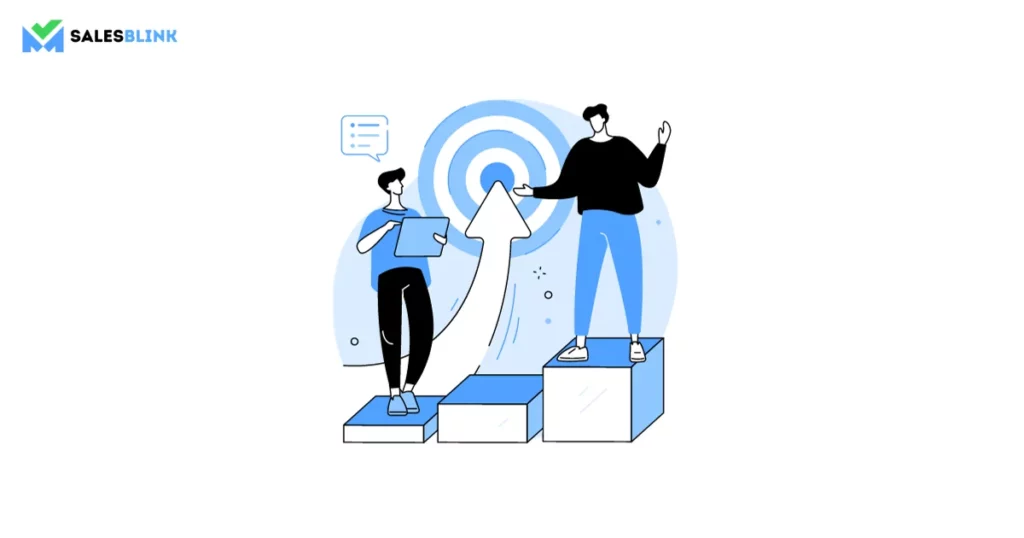
Effective personas are built through thorough study. Use various techniques to collect in-depth information on your audience, such as surveys, interviews, and social media analytics.
To find common trends, investigate statistics, behaviors, interests, and pain spots. Recognize the factors that influence, challenge, and affect the decisions of your audience.
This combined qualitative and quantitative data gives you an in-depth knowledge of your clients, allowing you to relate to their experiences.
Step 3: Narrow Down the Details
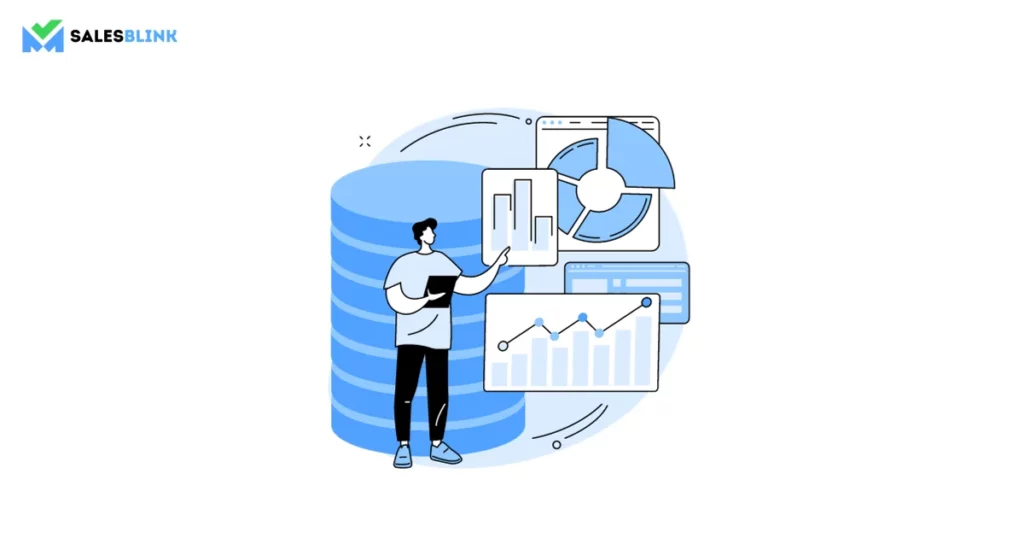
The critical step after having a wealth of data is simplifying the information. Look for patterns in the data that will help you identify your target audience. Examine age, location, profession, hobbies, difficulties, and objectives.
Here, being specific is critical; accurate information gives your characters a sense of authenticity and approachability. You may create personas that accurately represent real people by focusing on the details.
Using these little pictures doesn’t just make people feel things; they also tell you essential stuff. By understanding what your customers like and what problems they face, you can cater to their needs. Paying attention to these details means you can connect with them in a way that feels real. It helps you understand them better and make friends, even in a tough job market.
Step 4: Segment Your Customers
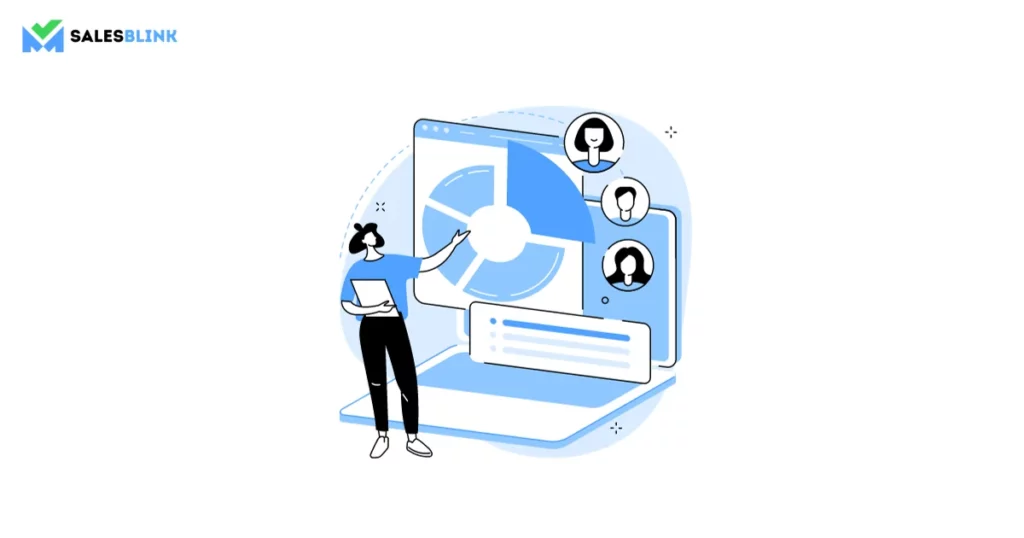
It is essential to acknowledge a variety of clients. They have particular requirements, tastes, and habits. Segmenting your audience based on shared traits is necessary to adapt to this variety effectively.
Each group in your client base has a unique identity, necessitating an approach that is customized. For each of these components, you should develop a unique persona to ensure accuracy and relatability.
These personas become more than simple representations since they capture the spirit of particular customer groups.
Step 5: Create Your Buyer Persona

For each segment, create a complete persona profile with a name, a made-up photo, statistics, work function, goals, challenges, and purchasing motivations.
Create a compelling, relevant narrative. Give your profile a personality, goals, and challenges. Humanize the information you’ve gathered. Consider how these personalities would act, what they would say, and how they would respond in various scenarios when developing them.
Connecting your marketing initiatives with their needs and desires is made simpler by creating personas that are more relatable and human.
Overall, developing customer personas is a complex task requiring careful research, collaboration, and original thought. These personas are more than just documents; they capture the spirit of your actual audience.
What Are Negative Buyer Personas?
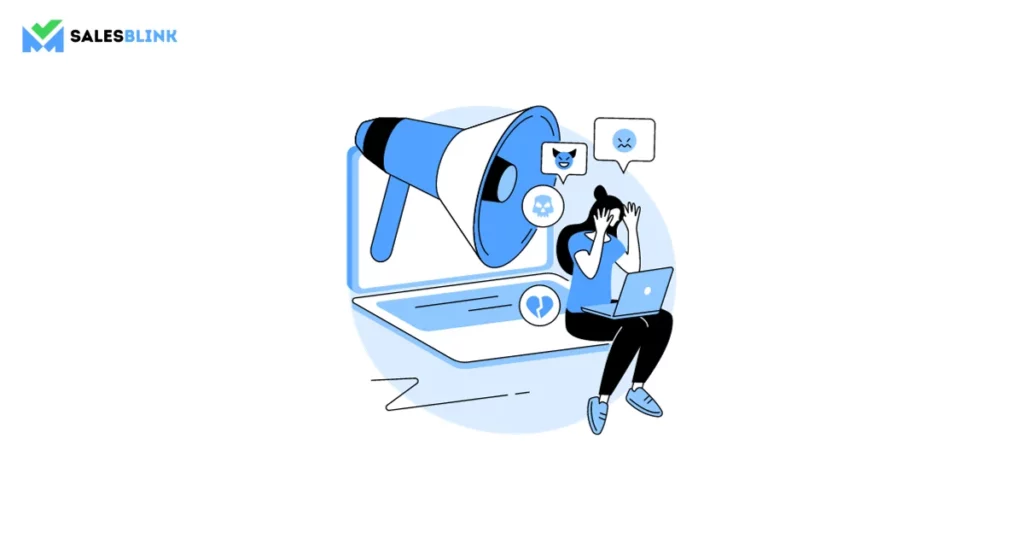
Creating negative buyer personas is like making a filter for your marketing. Imagine you have a giant field of people, but not all are right for what you’re selling. So, you create a list of traits that the people you don’t want to sell to have. It’s like taking a better aim in a shooting game, so you don’t waste your bullets.
This helps you save time and money by not trying to sell to people who won’t buy your stuff. You focus on the people likely to be interested and buy from you. It’s about more than knowing your customers, but also knowing who won’t be them. By avoiding the wrong people, your marketing becomes more effective. It’s about quality, not quantity.
Identifying these negative traits also helps you talk to the right people in the right way. You won’t send the wrong messages or show them stuff they don’t care about. This makes your customers happier, and you don’t waste your resources. In today’s competitive business world, knowing who not to target is like having a secret weapon that helps you use your money and time wisely, making your business stronger.
Why Should You Keep Updating and Refining Your Buyer Persona?
In the business world, things are constantly changing. Technology improves, people start liking different stuff, and new trends pop up. If businesses want to do well, they have to keep up. That means the imaginary customer profiles they create, called buyer personas, must be updated often. These profiles must match what people are like now, different from what they were ages ago.
By keeping these profiles up-to-date, businesses can make their products and ads fit what people want. It’s like staying in the loop about what your friends like and adjusting your plans to make them happy. When businesses do this, they can stay ahead of the game. They can even figure out what people might want before they know they want it!
So, updating these buyer personas is more than just a fancy idea; it’s like promising to always listen to your customers and give them what they want. That’s the way to succeed in a world that’s constantly changing!
Mistakes to Avoid When You Create a Buyer Persona

Here are common mistakes to avoid to ensure the buyer personas are accurate and valuable.
i) Making Assumptions
Relying on assumptions or beliefs can result in poorly thought-out strategies. Instead, rely on reliable data from surveys, interviews, and market research for your persona creation. Data-driven insights provide a clear understanding of your audience’s interests and behaviors.
ii) Over Generalizing
Avoid using stereotypes. Oversimplifying could reduce the impact of your personality. Be particular and concentrate on defining traits and qualities that accurately reflect the diversity of your target audience. Your identities will be more believable and relatable if they are specific.
iii) Neglecting Research
Accurate personas are built on solid research. Ineffective personas result from compromising on this step. Examine population statistics, purchasing patterns, reasons for doing so, and difficulties. Your personas can be more complex and in-depth the more thorough your research is.
iv) Lack of Validation
Verify the accuracy of your data sources. Relying on unreliable data can result in errors. Verify your conclusions using various sources and techniques to confirm their accuracy. For creating personas that accurately represent your audience, accurate data is essential.
v) Lack of Detail
More thorough personas produce better outcomes. Things become clear as you include specific information like hobbies, preferred communication methods, and daily struggles. You may develop incredibly focused marketing efforts thanks to these details, which give you a clear understanding of the lives of your customers.
vi) Not Considering Multiple Personas
Since every audience is unique, personas that are one size fits all will not work. Within your target audience, take into account different subgroups. Create various personas to represent multiple customer groups. Each persona should reflect the distinctive characteristics and preferences of its particular group.
vii) Not Aligning with Strategy
Your personas and your overall business strategy need to work in perfect balance. The characters you’ve developed should complement your marketing, product development, and customer service initiatives. Your plan can only be accurate if there is a mismatch, which could result in inefficiencies and missed opportunities.
viii) Ignoring Negative Characteristics
Positive and negative identities are equally important. As essential as knowing who your product or service is for is understanding who it is not for. Recognizing characteristics, habits, or populations that don’t fit your offering helps avoid unwanted leads, thereby preserving resources and ensuring your efforts are directed at the appropriate audience.
Creating authentic buyer personas necessitates close attention to detail, dependence on verified facts, and a thorough comprehension of your target.
Buyer Persona Examples
Knowing what different types of people like helps businesses be creative and realistic. Let’s take some famous people as examples. Elon Musk, always on Twitter, could be the perfect user for a new social site. Why? Because he likes using digital platforms and loves new tech stuff.
Now, meet Oh Il-Nam from Squid Game. He’s smart and has free time and money to spend. A travel service could target people like him who want extraordinary adventures for older folks.
Next, there’s Adele, the singer. After a tough breakup, she’s looking for company and uses a dating app. The app understands her feelings by looking at her social media and events. It sends her caring messages that match her emotions. This app isn’t just marketing; it’s like a friend, understanding her needs.
These examples show why knowing your audience is super important. Whether it’s someone like Elon Musk, a fan of made-up characters, or a famous singer like Adele, businesses must make their marketing personal. By understanding what people like and how they feel, companies can make real connections and surprise their audiences meaningfully.
Buyer Persona Template
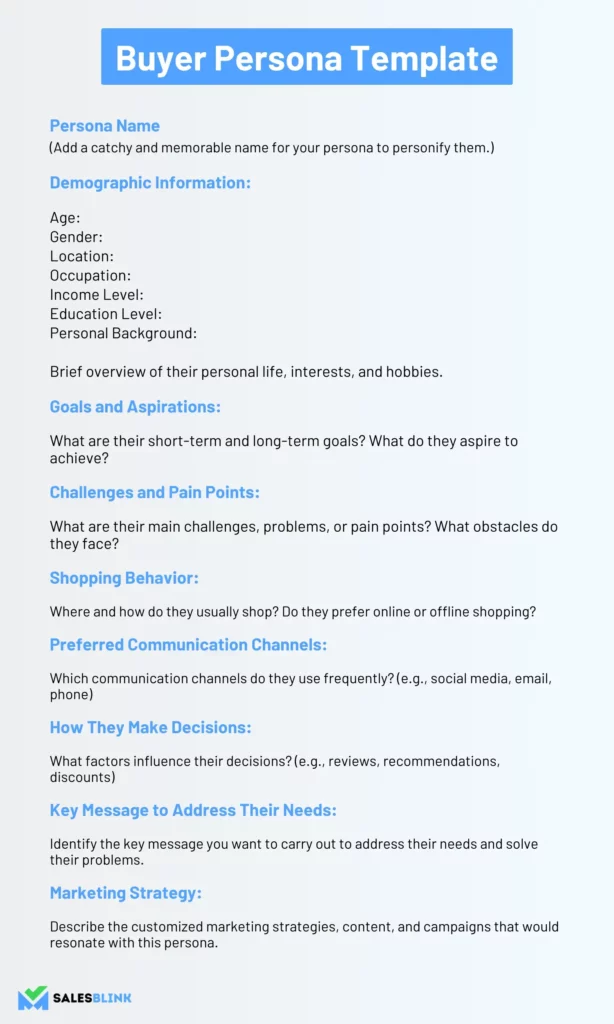
With the help of this template, you may go into the particulars of your target market, assuring a thorough comprehension of their requirements and preferences. Using this template as a starting point and personalizing your strategy will allow you to develop exciting and successful marketing campaigns that resonate with your target market.
Craft Compelling Buyer Personas To Understand Your Ideal Audience
In conclusion, developing buyer personas is a dynamic, ongoing process based on accurate data, empathy, and a deep awareness of market dynamics. It’s not just a single job; it’s a continuous process that changes as client tastes and behaviors change.
By investing time and effort in meticulously crafting and updating these personas, you can gain a profound insight into your audience’s needs and desires. This understanding becomes the basis for crafting compelling and personalized marketing strategies.
By addressing the unique challenges and aspirations of their customers, businesses can establish genuine connections and nurture customer relationships.
You can thank us when you are able to successfully reach your goal!
FAQs
A: The initial step involves assembling a varied team, including members from sales, marketing, customer service, and product development.
A: The length of time depends on how complex your market is and how thorough your research is. It can typically take several weeks to gather and carefully analyze the data.
A: Population statistics, behavioural habits, goals, difficulties, and motives are essential components. A compelling persona must be precise.







